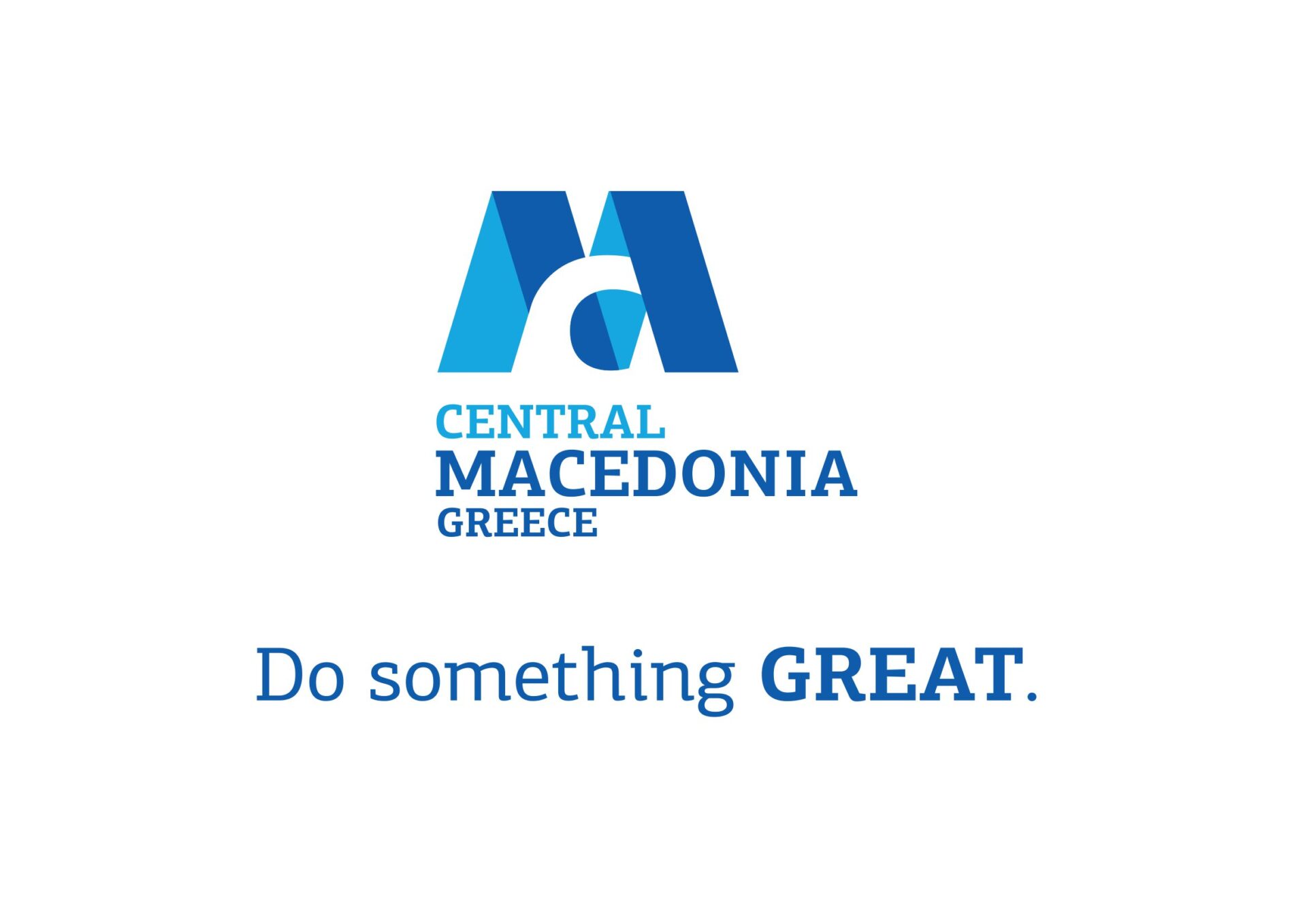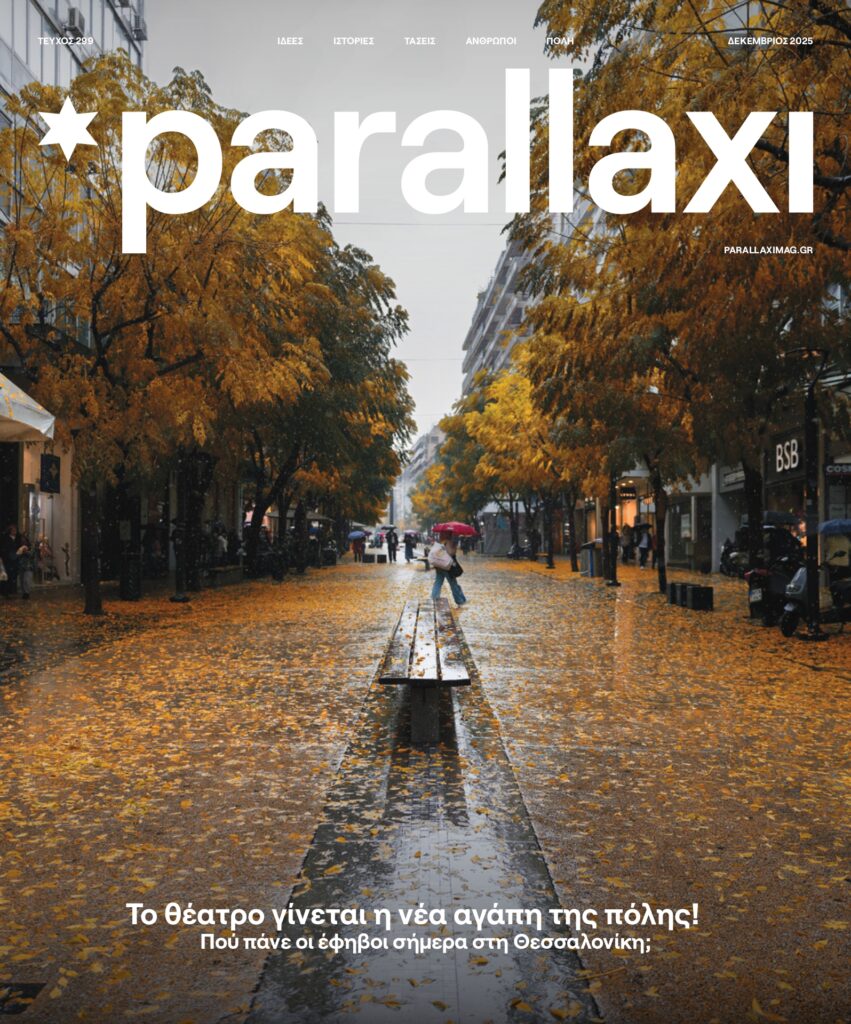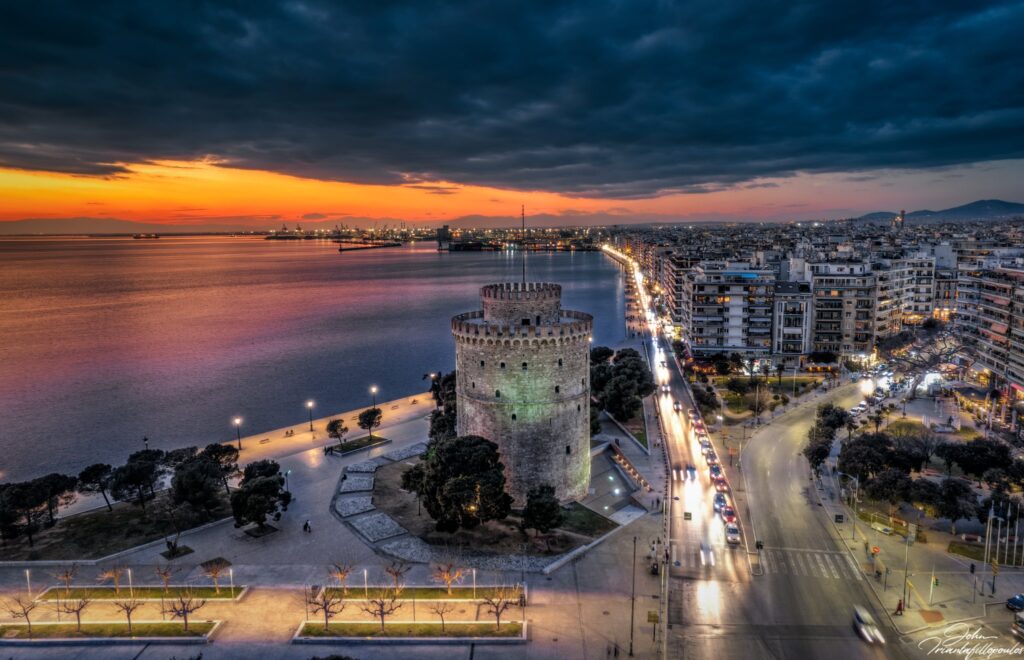Highlights of Thessaloniki: A spectacular city!
Dozens of UNESCO monuments, ancient and Roman buildings, temples, preserved houses, landmarks and places of great natural beauty, maintain the city’s high place on the world tourist map.
Μετάφραση: Δημήτρης Φωτιάδης/ Translation: Dimitris Fotiadis
Λέξεις: Σόνια Ταλαντινού / Words: Sonia Talantinou
With its 23-century history, Thessaloniki is a live museum with impressive sights. Every district seems to be dedicated to its conquerors, settlers, refugees, tourists, but above all to its inhabitants. Dozens of UNESCO monuments, ancient and Roman buildings, temples, preserved houses, landmarks bearing huge importance for the history of Greece and, also, places of great natural beauty, maintain the city’s high place on the world tourist map.
CENTRE
Our tour can start along the beachfront, from Megalou Alexandrou (Alexander the Great) Avenue. At the end of it lies the absolute symbol of the city, the White Tower, initially used as a prison for criminals charged with serious crimes. It has been standing there since the end of the 15th century. You can learn everything about its history in the permanent exhibition that is on display inside it. Just around the corner there is the OTE (telecommunications) Tower, a model hi-tech tower inside the premises of the Thessaloniki International Fair. It is the only building with a rotating floor in Greece, on its top level, where you can enjoy panoramic views of the city below and also Mt. Chortiatis all day. In the same area you shouldn’t miss the Archaeological Museum, which houses masterpieces of ancient Greek art, from pre-historic times to more recent ancient times, if you feel like learning everything about the ancient Macedonian world. Right across the street you can view the historic preserved Y.M.C.A. building, with its distinctive dome. The first indoors basketball arena in Greece was housed there, together with the local Y.M.C.A. Only a stone’s throw away you can find the Museum of Byzantine Culture, which impresses with its marvellous building, designed by Kyriakos Krokos, and its exhibits from the early Christian, Byzantine, Medieval and post-Byzantine periods, mainly from the area of Macedonia.
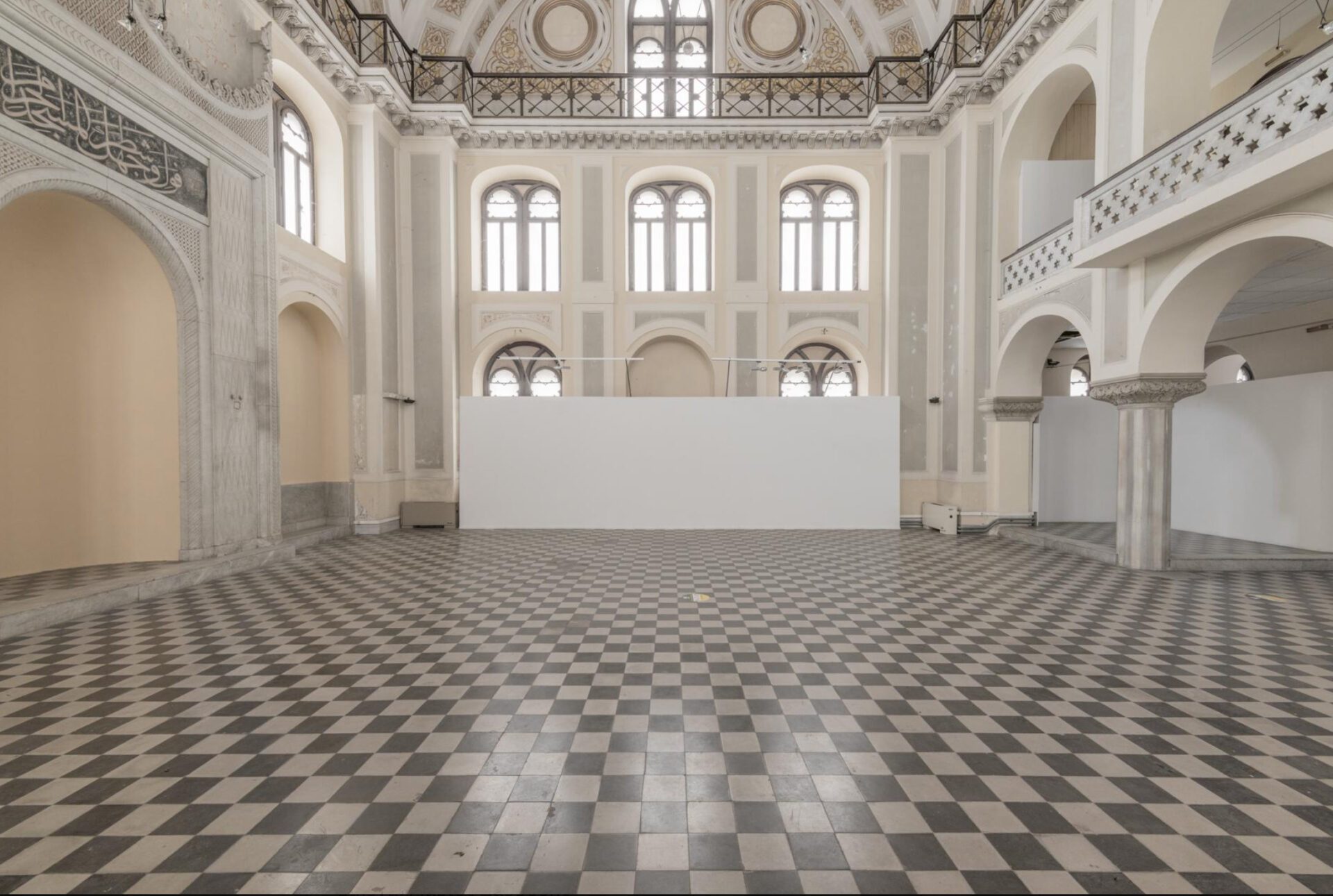
What would the city be without the National Northern Greece Theatre and the Royal Theatre nearby? The N.N.G.T. is northern Greece’s largest theatre and one of the largest theatre organisations in Europe. It is housed in the building of the Society for Macedonian Studies, with five winter stages and two open-air theatres. The 84-year-old Royal Theatre is one of the N.N.G.T. stages. Nea Paralia (new promenade) is the jewel of the city -especially after its renovation- and the most popular destination for residents and visitors alike. It offers an amazing itinerary by the sea, from the White Tower to Thessaloniki Concert Hall, with areas of greenery and water, seven thematic parks, works of art, a bicycle route, tennis and basketball courts, playgrounds, cafes etc. On the way you can marvel at the famous Umbrellas by Giorgos Zoggolopoulos and The Moon by the Coast by Pavlos Vasileiadis, as well as the iconic Statue of Alexander the Great, replicating the man on his beloved horse. These aren’t the only sculptures in public places in Thessaloniki, as these immovable witnesses of urban life are spread around the city. Some well-known examples are the statue of the politician Eleftherios Venizelos at Aristotelous Square, the monument commemorating the assassination of Grigoris Lamprakis on Ermou street, the T.I.F. sculpture outside the northern entrance of the fair, the statue of Aristotle in the centre of the square under the same name, the Holocaust Monument at Eleftherias Square, the Garden of Sculptures on the promenade etc. Running parallel to the promenade, the Pedion tou Areos or the Flower Exhibition Park offers a peaceful walk among trees, manmade streams and a pond with terrapins. The Xarchakos Park offers an alternative with its landmark fountain and its areas for relaxation, strolls or some exercise.
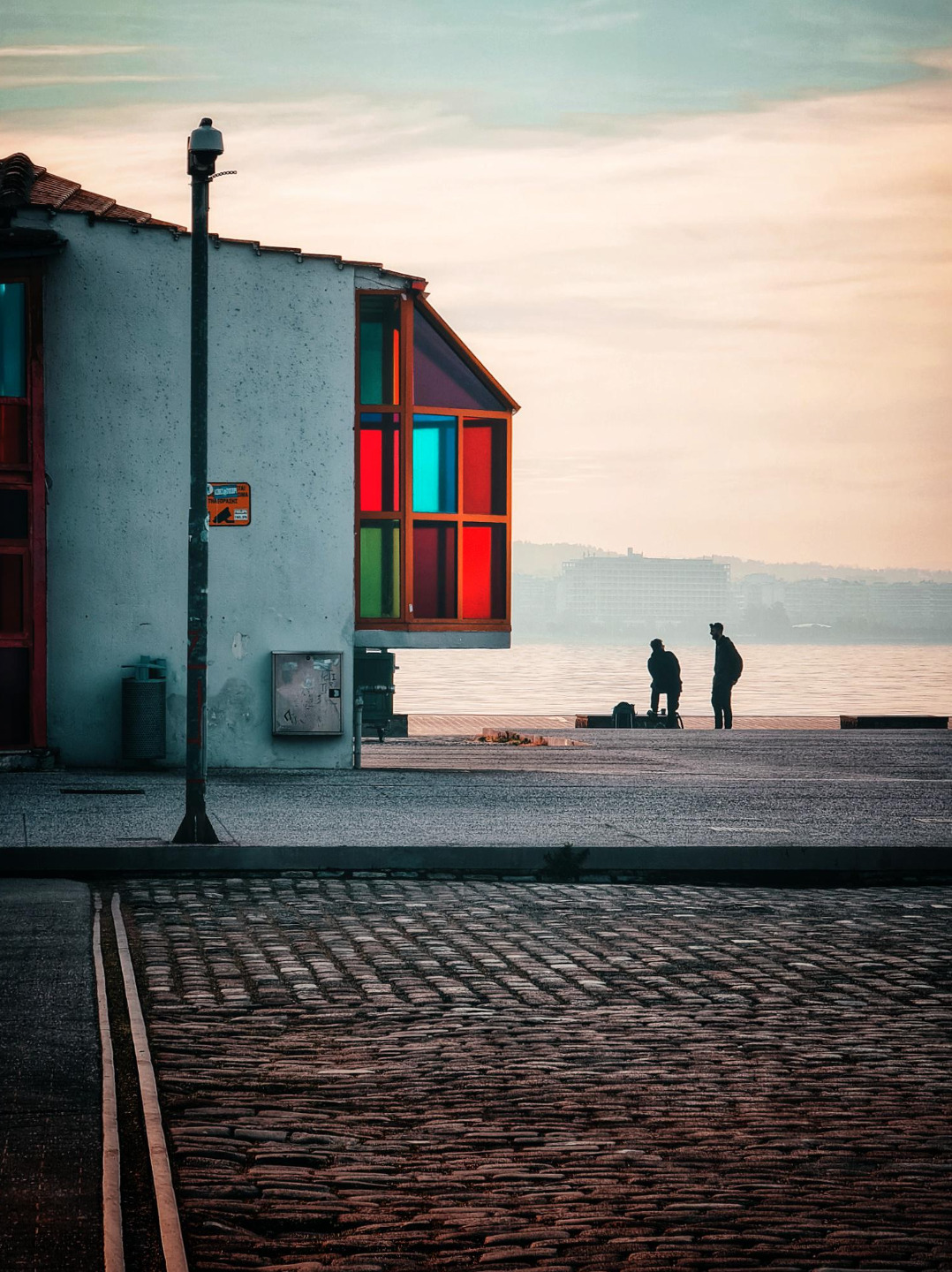
Right in the city centre there is the Church of Saint Sophia, one of the greatest symbols of the Orthodox Church. It is much more than just a church, though, as its low stone walls and the square in front of it are busy spots for tourists and residents, while the neighbouring Red House has been home to families and businesses, before becoming derelict and being renovated and transformed into the jewel of the square once again. Just off the square, the Timiou Prodromou Church, which lies below the street level, is a different kind of church, due to its garden that resembles a park ideal for relaxation.

The Church of Panagia Achiropoiitou is the most important surviving example of an early Christian basilica in Greece. Navarinou Square, the second busiest square behind only Aristotelous Square, is most interesting, not only because of its impressive monuments, like the Palace of Galerius, the Octagon, the Hippodrome, the Arch of Galerius (locally known as Kamara), a famous landmark of the Roman period, but also for its alternative character and shops. The Rotunda, a UNESCO World Heritage monument constitutes a unique chapter in the history of the city and is one of the most emblematic roman monuments in the country. In the Aristotle University campus we can marvel at the old building of the Faculty of Philosophy, with its distinctive “ΜΟΥΣΑΙΣ ΧΑΡΙΣΙ ΘΥΕ” inscription above the entrance, designed by C. Charitonidis, while the building itself was designed by Vitaliano Poselli. Also, within the campus we can see the Observatory, which attracts both scientists and friends of natural sciences and architecture, as it combines many elements. Moving east, the Kaftantzogleio Stadium was built with a donation from the Lysimachos Kaftantzoglou Foundation (hence the name) and is now used by Iraklis football club.
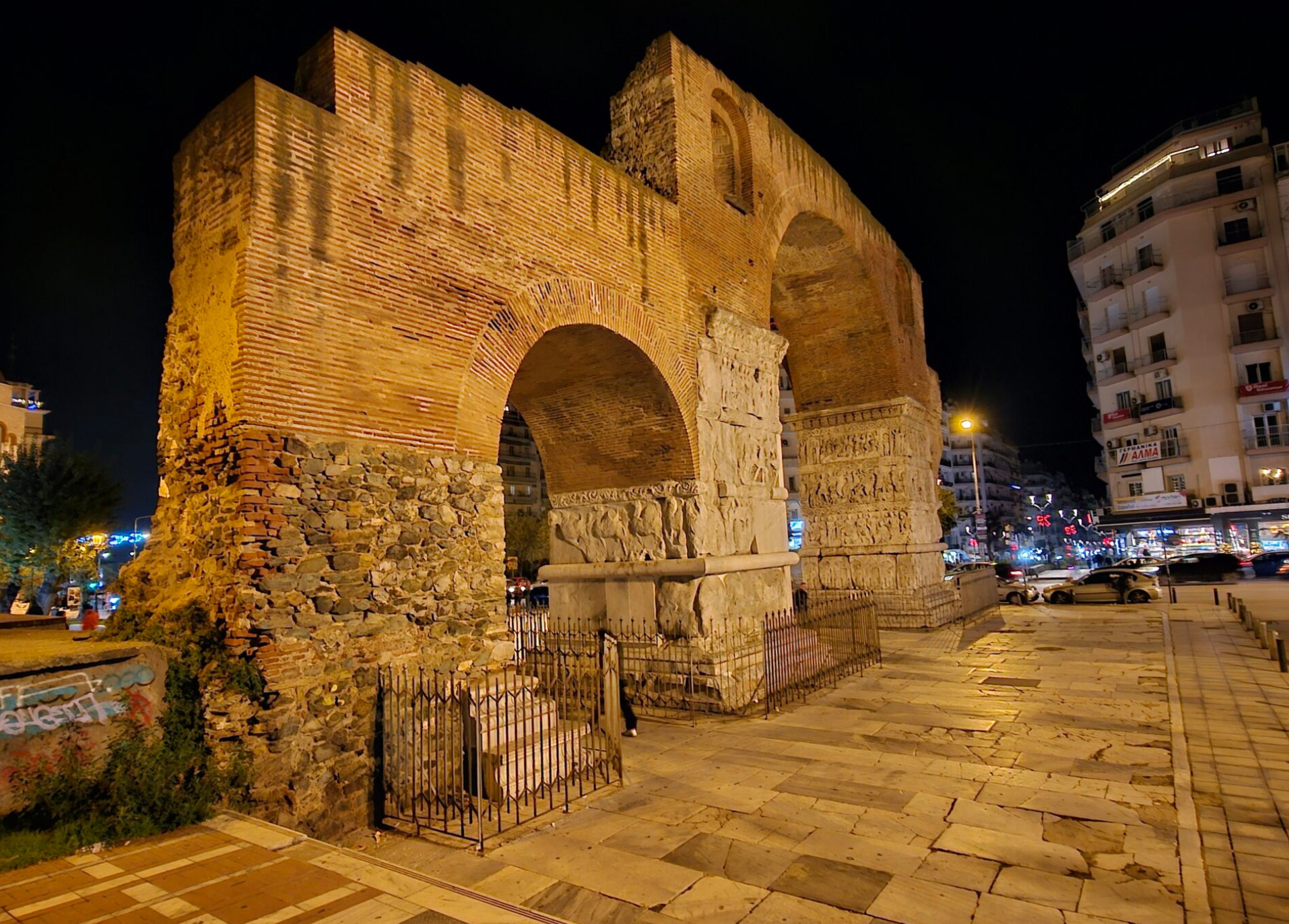
Facing the sea, Aristotelous Square is the hub around which the whole city and its people revolve: speeches, celebrations, appointments, walks, everything happens there. Its architecture incorporates Byzantine and western elements, buildings with galleries, colonnades and balconies, and its sea border is marked by the Electra Palace Hotel and Olympion buildings. Since we are in the market area, there is no better place to visit than the Modiano market, the first traditional food market and one of the largest covered markets, which was transformed in 2022 into a new food market concept with contemporary philosophy. If you are interested in more local scents and aromas, though, you should head to the Kapani-Vlali Market, where you can find almost anything in the little shops or just enjoy the hustle and bustle of Vlali Square, while tasting local dishes. Bit Pazar, with its well-hidden square, is the city’s oldest bazaar, in operation since 1928. You can enjoy a morning stroll around the many antique shops and become one with its history, then walk on the paved alleys of Athonos Square, among the restaurants, hagiography, carpentry and painting workshops, greengrocers’ and shops selling traditional products and spices. The Hamza Bey Mosque had been operational from 1468 to 1925, when it was bought by an entrepreneur and transformed into a cinema showing erotic films, Cine Alcazar. Nearby you can see the largest Ottoman baths in existence, Bey Hamam (a.k.a. Paradise Baths), today used as a venue for events.
The Roman Forum, which was revealed in 1966, is teeming with rare finds, which you can view if you take a few steps down the impressive underground building where the Museum of the Roman Forum of Thessaloniki is housed. A short walk away you can see the beautiful church of Panagia ton Chalkeon, named after the coppersmiths’ workshops of the area. The Bezesteni market, with its Muslim architecture, once teeming with goldsmiths, is now full of fabric shops, florists and tailors. The florists gave their name to the Louloudadika area, a refreshing experience, with its outdoor shops full of vivid colours and seducing aromas. Towards the western part of the city centre, the Ladadika area, offering entertainment and traditional architecture, is very popular among Greeks and foreigners with its vibrant nightlife, while the Valaoritou area in the “Frankish” district is also ideal if you are looking for nightlife.
A walk around the Limani (port) area is also very interesting, since besides being a financial hub, the port is also a cradle of culture and entertainment. In its premises a lot of institutions take place, like the Thessaloniki International Film Festival, the Documentary Festival, the PhotoBiennale, the Thessaloniki Cinema Museum with rare material from 1910 and also bars and restaurants, in addition to the MOMus Museum of Photography and the MOMus Experimental Centre for the Arts. The last two are part of the MOMus cultural institution, together with Contemporary Art – Kostakis Collection Museum in Stavroupoli and the Contemporary Art Museum in the city centre. If you are attracted by the Sephardic history –especially the one in Thessaloniki– then the Jewish Museum of Thessaloniki should be on your list, so that you can learn about the history and the traditions of the city’s Sephardic Jews through sensational exhibits and photographs.
Although not all the city’s galleries have been mapped yet, you should visit the Malakopi one, built in 1906, with its clock hands frozen at the time of the 1978 earthquake, and Saul Gallery, a real architectural gem with lots of renaissance and art-deco elements, which is nowadays one of the top spots for entertainment in the city. Fragkon Street was a great shopping area with a strong European presence, hence the “fragkomachalas” name. Among its buildings you can see the 1899 Catholic Church, with its distinctive statue of Madonna in its yard, and the 1840 baroque Kratiko Odeio (state conservatory) building, with the two oldest urban sculptures in its yard. Moving west, near the Court building you can see Vardaris Tower, the only one surviving in the city centre, built in 1546 by Suleiman the Magnificent. In the beginning of Olympou Street there is Mavili Square, the most successful example of a square redevelopment, which has become the new hot spot for tourists, with Agion Apostolon Church in the middle, the most important sample of the Palaeologus era art. This itinerary will take you to Agios Dimitrios Church, the most famous Byzantine church, with its breathtaking crypt and the gallery complex beneath it, a place of pilgrim for thousands of Christians.
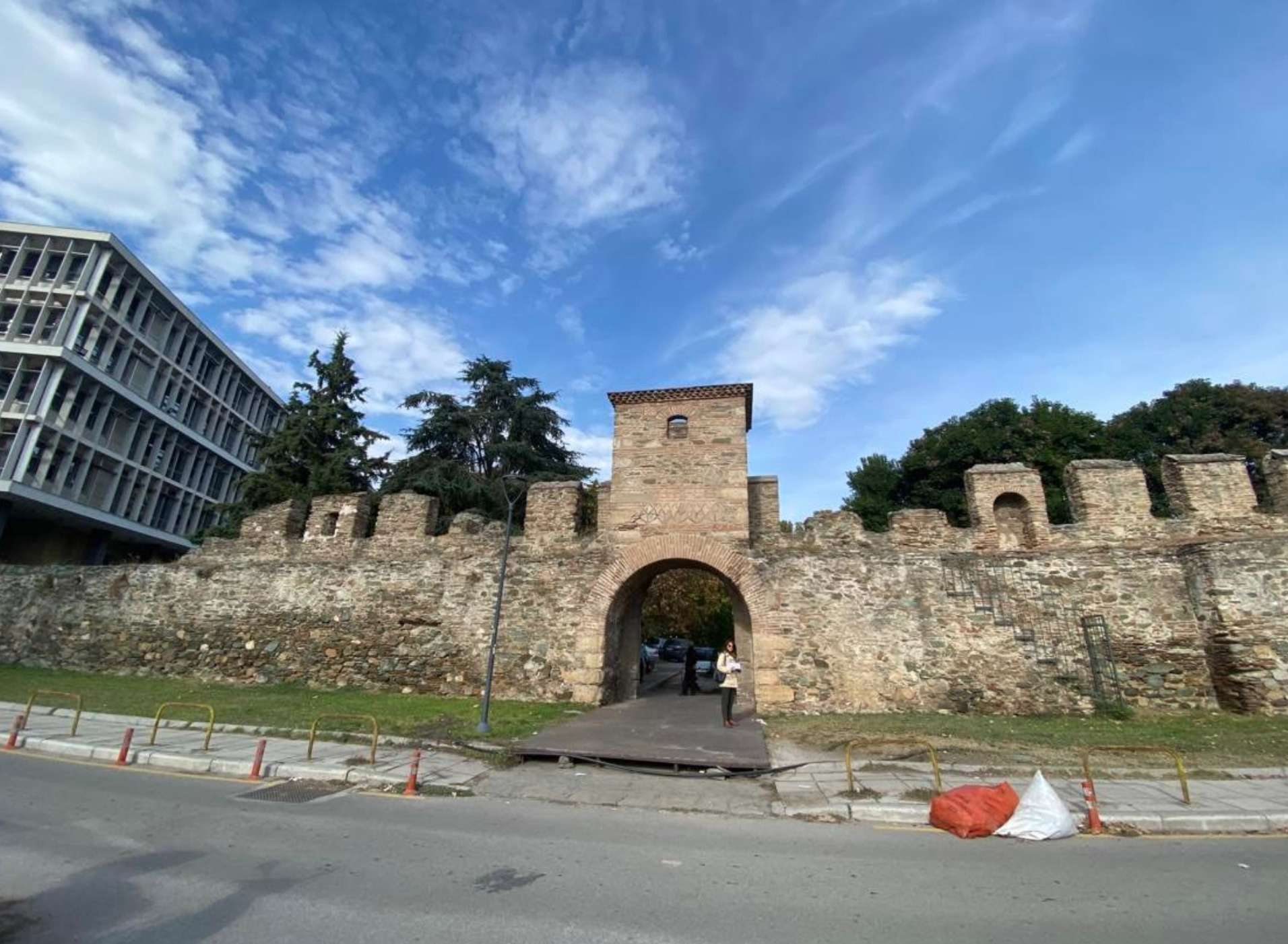
ANO POLI
A walk around Ano Poli should be at the top of the to-do list, as it is an enchanting puzzle of paved alleys, traditional houses and Byzantine monuments, which will take to a time-travel. The 1880 Municipal Cemetery of Evangelistria is the first of its kind and its many tombs provide lots of stories about prominent figures of Thessaloniki and beyond. Islahane, which means “rehabilitation house” used to be home to orphans and poor children since the end of the 19th century, while today it is one of the most beautiful cultural multiplexes. Further uphill you can see the Agios Dimitrios hospital, a distinctive building with authentic classicist elements from the Renaissance era and a yard with lush greenery. Heptapyrgio, the city walls, is the jewel of the city. It consists of the Byzantine citadel –with 10 towers–, the Acropolis and the entrance tower, named Yedi Kule. In the 1890s the citadel was transformed into a prison and in 1989 it was characterised as a UNESCO World Heritage monument. Pyrgos of Trigoniou (triangle tower) within the Medieval Byzantine walls offers a breathtaking view of the city and it was built at the same time period as the White Tower. From there you can visit the famous Tsinari area, with the café-restaurant –which opened in 1885– bearing the same name, the oldest Byzantine fountain, the picturesque alleys and the Macedonian houses.
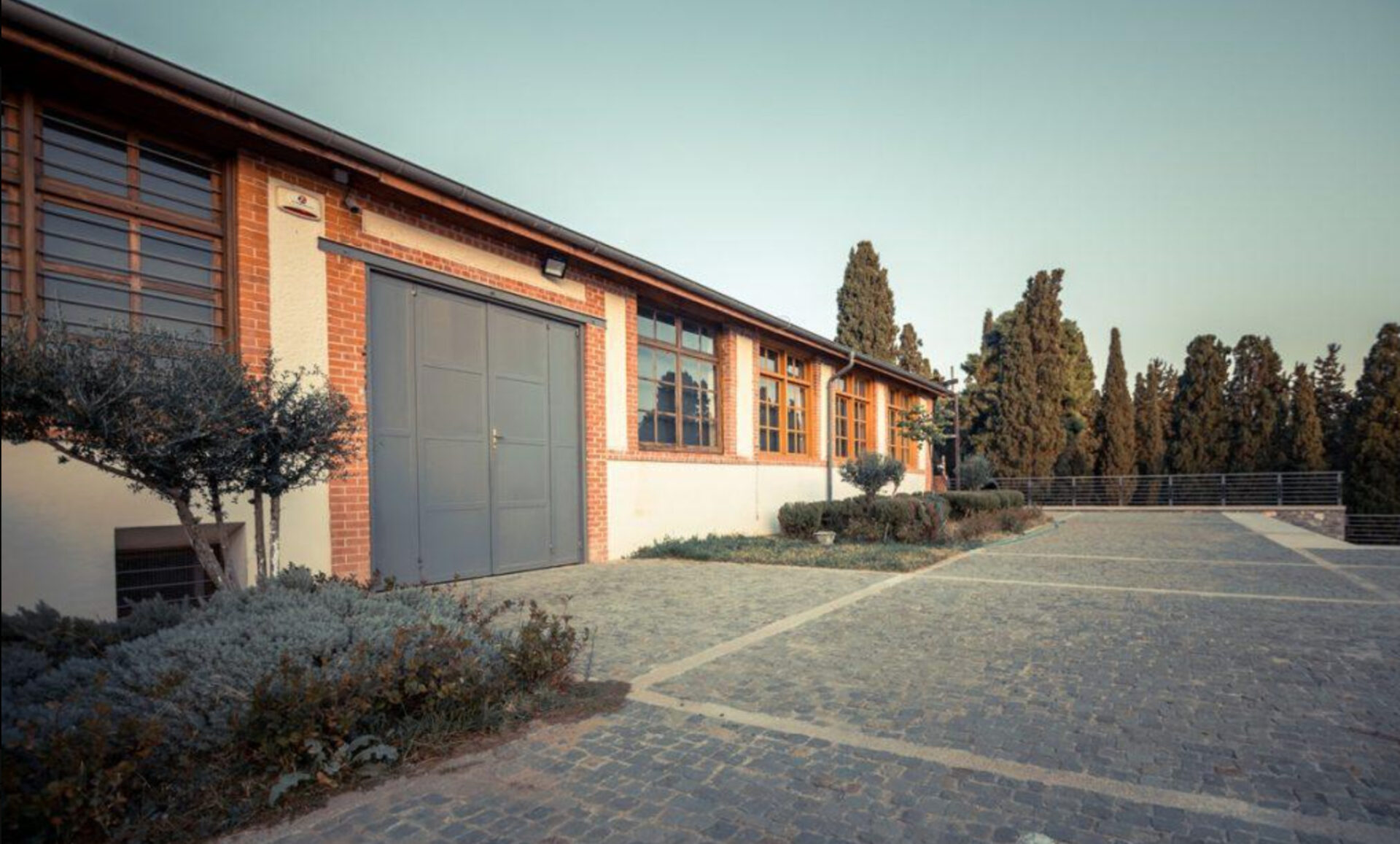
In the area there are two secret yards which belong to two wonderful little churches, Agios Nikolaos Orfanos and Osios David, but there is another one that surpasses them, Moni Vlatadon, with its gorgeous location overlooking the city centre and its yard with the peacocks and other little animals that are bred there. Kipoi tou Pasha (Pasha’s gardens) nearby, with their Gaudi-inspired architecture, is a green area full of pine trees, a fountain and strange stone constructions, ideal for relaxation and strolls. Alatza Imaret, a mosque built in 1484 on the Kassandrou street was used as a poorhouse and a seminary, whereas today it is an exhibition centre for the Municipal Art gallery. Higher up the hills, the Kara Tepe area within the Seih Sou forest offers panoramic views, serenity, hiking trails and wooden gazebos.

WEST
Moving west from the port area there is Palios Sidirodromikos Stathmos (old railway station) where you can see the 1900 building which was initially used as the residence of the construction company manager. The first railway line connected Thessaloniki with Mitrovica (now in Kosovo) and the second one with Istanbul. One of the most impressive neoclassical building in the area is Villa Petridi, built in the early 20th century, now used as a cultural centre. Near the Byzantine city walls the pioneering cultural institution of Politistiki Geitonia Sykeon promotes all arts and creations in a series of renovated refugee houses, while Alsos Sykeon, in the same area, is the appendix of the Seih Sou forest, with trails and gazebos for a picnic with great views under the sound of birdsong. Another oasis is the Botanical Garden of Stavroupoli, a place full of coniferous trees, thousands of plant species, a beautiful gazebo and a greenhouse with tropical and carnivorous plants.
The Former Army Barracks of Pavlos Melas which operated from 1881 until 2005 is a historic barracks complex in Stavroupoli. These days it is being transformed into a vast urban park which will house -among other things- the Museum of Greek Refugees from Asia Minor and the Museum of the Antiquities found during the construction of the underground rail system. In Dasyllio of Meteora (Meteora grove) you can marvel at the magnificent nature and relax on a park bench among the pine trees, have a picnic or just walk. Moving towards the city centre, the Zeitenlik Museum of the French Military Cemetery is dedicated to the French soldiers that lost their lives during World War I. It is located in the largest necropolis of the Balkans, The Zeitenlik Cemeteries, which house countless graves of soldiers from various European countries. The Indian Military Cemetery in Dendropotamos is worth visiting too, due to its different aesthetics. The top cultural centre of the western suburbs is Moni Lazariston, a former monastery built in 1886 by Vincentian/Lazarist monks. The train graveyard of Nea Ionia offers otherworldly sights of abandoned railway cars and other railway equipmwnt, abandoned for more than 30 years. The new HUB 26, the first large-scale bioclimatic business park in northern Greece is located in the premises of the former legendary brewery Fix.
EAST
Starting from the Papafeio Foundation, donated by Ioannis Papafis, which used to be a hospital and now is an orphanage, you can continue towards the 4000 year-old Toumba Hillock, next to the stream with the same name, where a community of prehistoric people lived for hundreds of years. In the same area there is Toumba Stadium, home of PAOK football club, donated by the Dedeoglou family and completed in 1959. Nea Elvetia Park, named after its resemblance to Swiss parks, is one of the most historic in Greece. It has been renovated and has upgraded the whole surrounding area of Harilaou, offering the ultimate destination for relaxation within the city limits. Kleanthis Vikelidis football ground nearby, home of Aris football club, bears the name of one of the most prominent Greek footballers.
Folklife and Ethonological Museum of Macedonia and Thrace, once the legendary home of the banker Jacob Modiano, houses more than 20,000 artefacts from Macedonia and Thrace, while Yeni Mosque, built in 1902 by Pozelli as a place of worship for the Islamised Jews of the city, is today a venue for exhibitions by the Municipal Art Gallery of Thessaloniki. The whole area around Synoikia of Exoches is teeming with great neoclassical mansions with fabulous gardens, like Villa Mehmed Kapandji, which houses the National Bank Cultural Foundation and Centre, Villa Mordoch, which houses municipality offices and Casa Bianca, where the Municipal Art Gallery of Thessaloniki is housed since the 90s. At the end of the promenade lies Thessaloniki Concert Hall with its unique view, consisting of two separate buildings with contrasting but somehow complementary aesthetics.
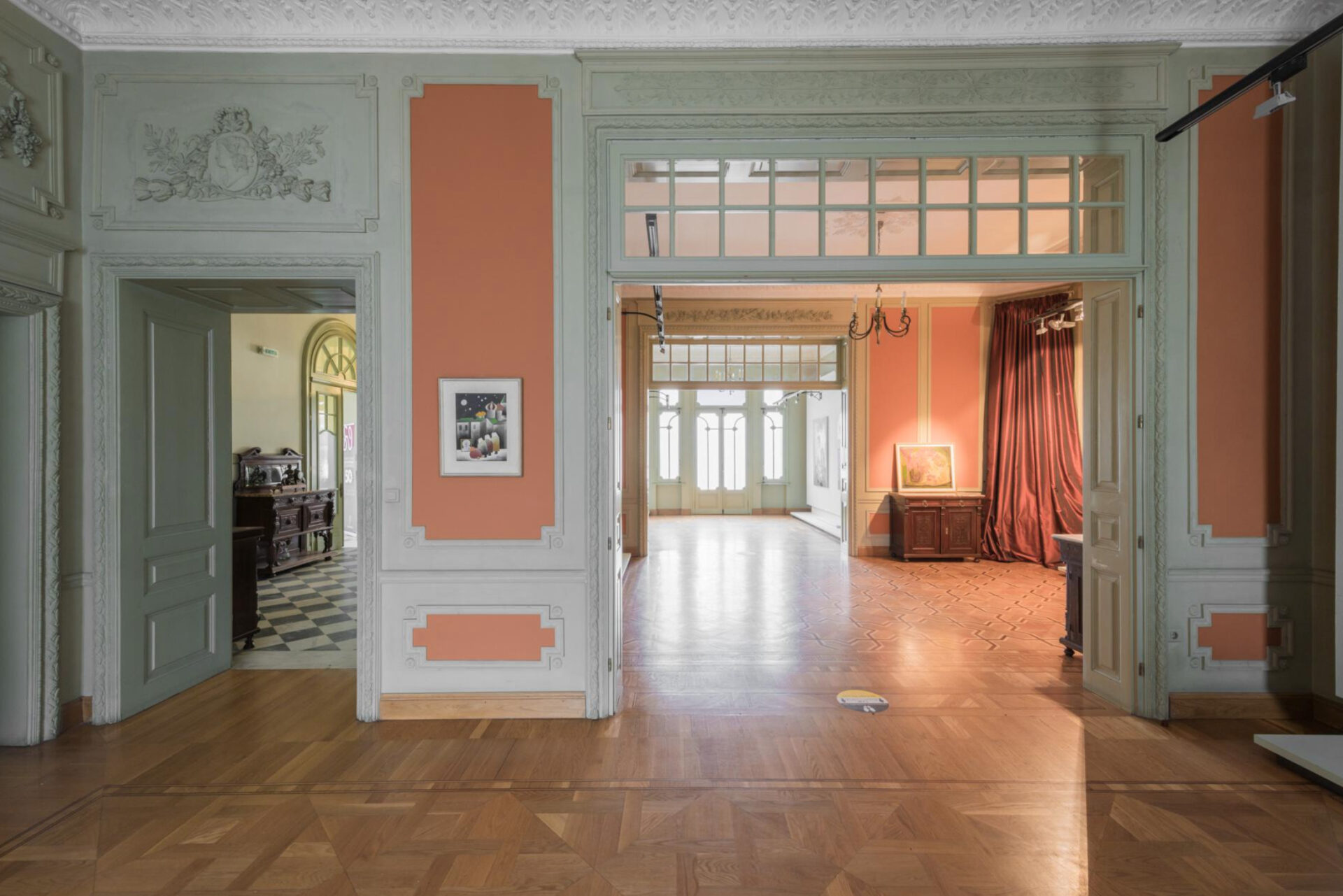
KALAMARIA
Just a few kilometres east of the city centre lies Aretsou Marina, with its open views towards the sea, lush green environment and also berths for vessels. Krini, the busy part of the seaside is an entertainment hub, full of modern cafes, taverns and bars. Heading east from the Concert Hall and moving along the coastline you will come across Kellarios Ormos (cove), with its rich historic and archaeological heritage, next to the Nautical Club of Thessaloniki, one of the oldest nautical clubs in Greece, since it was founded in 1931. On its jetty, the chapel of Saint Nicolaos with its Cycladic architecture is a must-see. Further east, Palataki or Kyverneio is a building in a wonderful area right next to the sea, reminiscing of glories of the past, as it had been used as residence for royal families and politicians. In Nea Krini there is also Ippikos Omilos, the first equestrian club in northern Greece, with three racetracks and excellent facilities for any kind of event by the sea.
In the centre of Kalamaria lies the Vasilis Triantafyllidis stadium, home of Apollon Kalamarias football club. Between a high school and the Allatini and Zardinidi villas you can marvel at the fairytale Ouziel neighbourhood, with vintage detached houses, tiled roofs, cobblestone alleys and yards with trees and climbing plants. No wonder it has been decided that it should be preserved in its current state. Allatini Mills nearby, an impressive abandoned factory, is due to be transformed into a contemporary sustainable project. Stratopedo Kodra in Karabournaki was home to all kinds of people throughout history, from ancient residents to English and French allied troops during WW II, and also soldiers of the Greek army, while now it hosts exhibitions and events.
ON THE OUTSKIRTS AND BEYOND
Among abandoned fields, parking areas and shops, along Georgikis Scholis Avenue you can visit Karnagio, with its cranes, giant ships, boats, fishing boats and yachts, and enjoy some tsipouro at the only “ouzeri” in the area. NOESIS Science Centre and Technology Museum in the Thermi area will appeal to any fan of science and technology. Just as you leave Panorama village heading towards Chortiatis you pass by Platanakia, a forested area rich in tall perennial trees, lush wetland, an artificial pond, recreation areas, a restaurant and a trail leading to Thermi Dam, another magnificent area of natural beauty, with a man-made lake and a unique wetland, with pine trees, cypresses, flocks of birds, a café and a playground.
Further east lies the village of Chortiatis, on the foot of the mountain with the same name, offering an unprecedented experience with rich nature and excellent restaurants. Alternatively, just outside Asvestochori village you can visit Dasos Kouri, one of the most beautiful forests in northern Greece. The Lachanokipoi of Polichni (garden allotments) are only just a few nowadays but once they were many more and very impressive, while the Neromyloi (water mills) are an archaeological area with five Byzantine and post-Byzantine water mills and a wine press, combined with marvellous natural environment. It seems that nature has a lot on offer in the area west of the city. Oreokastro Lake is a real treasure for an idyllic escape, with lush vegetation, a man-made lake and endless serenity, while the Kalochori Lagoon with its shallow waters is home to flamingos, as well as herons, pelicans, sea eagles and ducks.
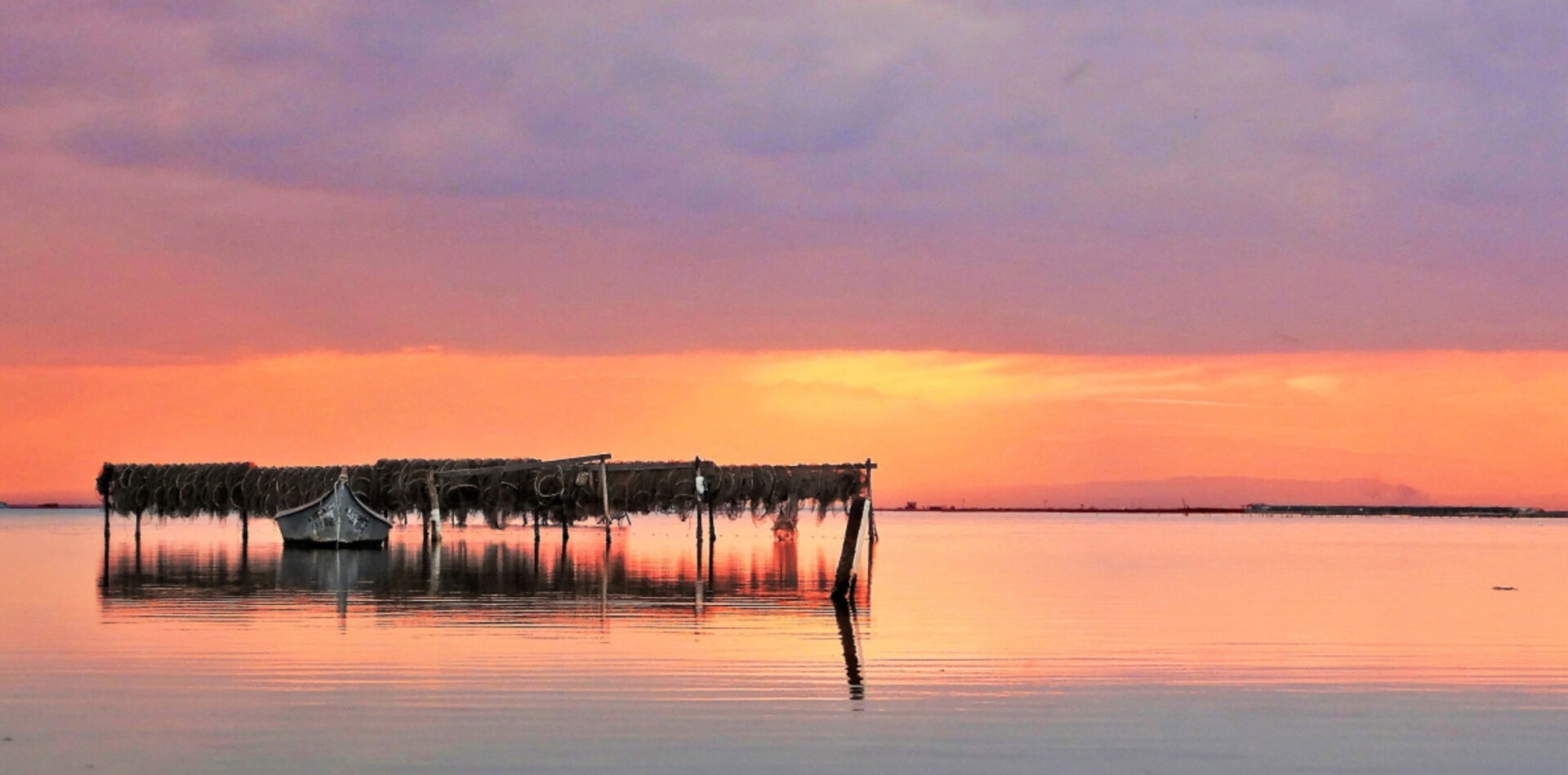
If you are in for a pilgrimage, the Holy Patriarchal and Stavropegic Monastery of Agia Anastasia Farmakolytria outside Vasilika village is uniquely imposing and emits powerful energy. The Monastery of Agios Ioannis Theologos near the village of Souroti is a monastery for women and hosts the tomb of Saint Paisios. Navagio, in Epanomi, with its crystal-clear waters, golden beach and impressive shipwreck from 1970 has been a popular summer destination for years, similar to the beachfront villages of Peraia, Neoi Epivates, Agia Triada and Nea Michaniona (with its famous fish market). Situated on the outskirts of Thessaloniki, all these villages have been established in 1923 by the first Greek refugees that arrived from Asia Minor. Once beloved summer holiday destinations, they offer blue-flag beaches, sports complexes, restaurants that serve fresh fish, cafes and bars right on the beach.
Axios Delta (estuary) on the northwest area of Thermaikos gulf is one of the most important wetlands in Europe, with hundreds of species of flora and fauna. The Axios-Loudias-Aliakmonas National Park includes the Kalochori Lagoon, the estuaries of Axios, Gallikos and Aliakmonas rivers, as well as the wetlands of Nea Agathoupoli and Alykis Kitrous. On the opposite side of the gulf you can visit Faros (lighthouse) at Angelochori, one of the 25 Preserved Modern Industrial Heritage Sites in Greece.
Notice! If you feel like visiting the city’s highlights on one itinerary, you can opt for the No. 50 bus, alternatively known as the Cultural Route of O.A.S.Th., which can take you to the White Tower, the Archaeological and Byzantine museums, the Galerius palace, the church of Agia Sofia, Aristotelous Square and Ano Poli in just 50 minutes, while you indulge in the magic of a diverse experience!
In cooperation:
